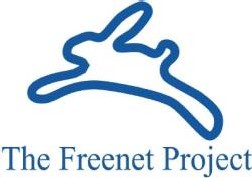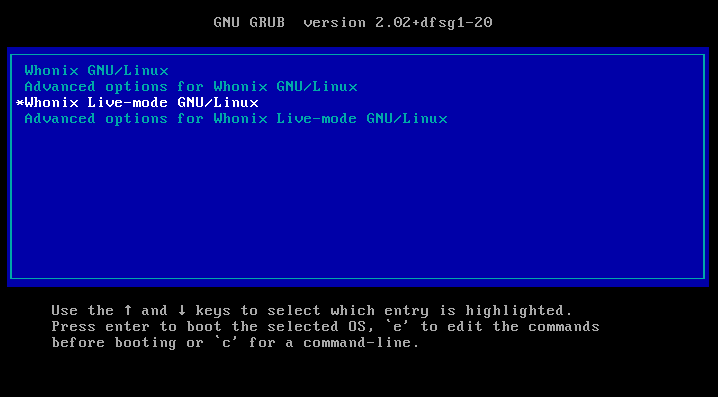🌐6 TOOLS THAT HELPS YOU TO ACHIEVE COMPLETE ANONYMITY ON THE INTERNET🌐
In this post, I am going to show you 6 best tools that helps you to achieve complete anonymity on the internet.
🔰 I2P [ Network ] | Windows | macOS | Linux | Android:

I2P is an anonymous network built on top of the internet. It allows users to create and access content and build online communities on a network that is both distributed and dynamic. It is intended to protect communication and resist monitoring by third parties such as ISPs.
I2P is an anonymous network, exposing a simple layer that applications can use to anonymously and securely send messages to each other. The network itself is strictly message based (a la IP), but there is a library available to allow reliable streaming communication on top of it (a la TCP). All communication is end to end encrypted (in total there are four layers of encryption used when sending a message), and even the end points ("destinations") are cryptographic identifiers (essentially a pair of public keys).
How does it work?
To anonymize the messages sent, each client application has their I2P "router" build a few inbound and outbound "tunnels" - a sequence of peers that pass messages in one direction (to and from the client, respectively). In turn, when a client wants to send a message to another client, the client passes that message out one of their outbound tunnels targeting one of the other client's inbound tunnels, eventually reaching the destination. Every participant in the network chooses the length of these tunnels, and in doing so, makes a tradeoff between anonymity, latency, and throughput according to their own needs. The result is that the number of peers relaying each end to end message is the absolute minimum necessary to meet both the sender's and the receiver's threat model.
The first time a client wants to contact another client, they make a query against the fully distributed "network database" - a custom structured distributed hash table (DHT) based off the Kademlia algorithm. This is done to find the other client's inbound tunnels efficiently, but subsequent messages between them usually includes that data so no further network database lookups are required.
More details about how I2P works are available.
What can you do with it?
Within the I2P network, applications are not restricted in how they can communicate - those that typically use UDP can make use of the base I2P functionality, and those that typically use TCP can use the TCP-like streaming library. We have a generic TCP/I2P bridge application ("I2PTunnel") that enables people to forward TCP streams into the I2P network as well as to receive streams out of the network and forward them towards a specific TCP/IP address.
I2PTunnel is currently used to let people run their own anonymous website ("eepsite") by running a normal webserver and pointing an I2PTunnel 'server' at it, which people can access anonymously over I2P with a normal web browser by running an I2PTunnel HTTP proxy ("eepproxy"). In addition, we use the same technique to run an anonymous IRC network (where the IRC server is hosted anonymously, and standard IRC clients use an I2PTunnel to contact it). There are other application development efforts going on as well, such as one to build an optimized swarming file transfer application (a la BitTorrent), a distributed data store (a la Freenet / MNet), and a blogging system (a fully distributed LiveJournal), but those are not ready for use yet.
I2P is not inherently an "outproxy" network - the client you send a message to is the cryptographic identifier, not some IP address, so the message must be addressed to someone running I2P. However, it is possible for that client to be an outproxy, allowing you to anonymously make use of their Internet connection. To demonstrate this, the "eepproxy" will accept normal non-I2P URLs (e.g. "http://www.i2p.net") and forward them to a specific destination that runs a squid HTTP proxy, allowing simple anonymous browsing of the normal web. Simple outproxies like that are not viable in the long run for several reasons (including the cost of running one as well as the anonymity and security issues they introduce), but in certain circumstances the technique could be appropriate.
The I2P development team is an open group, welcome to all who are interested in getting involved, and all of the code is open source. The core I2P SDK and the current router implementation is done in Java (currently working with both sun and kaffe, gcj support planned for later), and there is a simple socket based API for accessing the network from other languages (with a C library available, and both Python and Perl in development). The network is actively being developed and has not yet reached the 1.0 release, but the current roadmap describes our schedule.
🔰 Disconnect Basic [ VPN ] | Chrome | Safari | Firefox | Opera | Android:

Disconnect is founded on a basic principle: that people should have the freedom to move about the Internet - and their lives - without anyone else looking over their shoulder.
Disconnect believes that everyone should have a voice in determining their own optimum level of privacy and how their personal information is treated. We are here to educate, inform, and empower individuals, with tools and solutions that not only give people insight into what’s happening with their digital data, but also give them control over who has access to it.
Disconnect intends to be an advocate for every individual on every device, and to create enduring, positive change in the way our personal data is created, managed, controlled, and shared.
Disconnect mission is to make the Internet better by giving people greater transparency and control over the personal information they share online. We do what we do to make it easier for people to protect their privacy and enjoy the Internet.
Disconnect was founded in 2011 on a belief that we all have a right to privacy. Our award-winning, user-friendly software and solutions protect hundreds of millions of people.
🔰 Freenet [ Network ] | Windows | macOS | Linux:

Freenet is free software which lets you anonymously share files, browse and publish "freesites" (web sites accessible only through Freenet) and chat on forums, without fear of censorship. Freenet is decentralized to make it less vulnerable to attack, and if used in "darknet" mode, where users only connect to their friends, is very difficult to detect.
Communications by Freenet nodes are encrypted and are routed through other nodes to make it extremely difficult to determine who is requesting the information and what its content is.
Users contribute to the network by giving bandwidth and a portion of their hard drive (called the "data store") for storing files. Files are automatically kept or deleted depending on how popular they are, with the least popular being discarded to make way for newer or more popular content. Files are encrypted, so generally, the user cannot easily discover what is in his datastore, and hopefully can't be held accountable for it. Chat forums, websites, and search functionality are all built on top of this distributed data store
🔰 Whonix [ Bootable OS ] | Windows | macOS | Linux:
Whonix ™ is software designed to preserve privacy and anonymity by helping users run applications anonymously. Whonix ™ can be installed on Windows, macOS, and Linux. Whonix ™ also comes pre-installed in Qubes (Qubes-Whonix ™).To protect a user's anonymity on the Internet all connections are forced through the Tor network and numerous security mechanisms are deployed.

🔰 Tor Browser [ Browser / Network ] | Windows | macOS | Linux
 Tor is free and open-source software for enabling anonymous communication. Thousands of volunteers are running computer servers that keep users anonymous on the Internet. It works by moving data across many Tor servers, called Tor relays. The role of each server is to move that data to another server, with the final hop moving data to the end site. As a result, information transmitted in this way is hard to trace.
Tor is free and open-source software for enabling anonymous communication. Thousands of volunteers are running computer servers that keep users anonymous on the Internet. It works by moving data across many Tor servers, called Tor relays. The role of each server is to move that data to another server, with the final hop moving data to the end site. As a result, information transmitted in this way is hard to trace.
🔰 Tails [ Bootable OS ] | Windows | macOS | Linux:

Tails, or The Amnesic Incognito Live System, is a security-focused Debian-based Linux distribution aimed at preserving privacy and anonymity. All its incoming and outgoing connections are forced to go through Tor, and any non-anonymous connections are blocked. The system is designed to be booted as a live DVD or live USB and will leave no digital footprint on the machine unless explicitly told to do so. The Tor Project has provided financial support for its development in the beginnings of the project. According to the Whonix Project, in comparison with other anonymity-focused software or platforms, "Tails is better suited for high-risk users who face aggressive, targeted surveillance." As of the latest version, Tails comes with Secure Boot.
